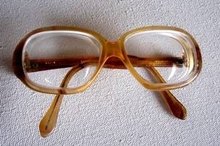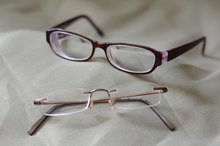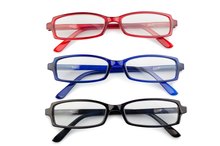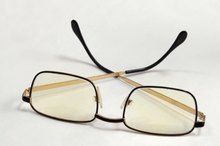Photochromic Vs. Polarized Sunglasses
Sun exposure can cause damage to your eyelid, cornea, lens and additional eye parts. Sunglasses can protect the eyes from the sun’s harmful rays -- however, some types of sunglasses provide added benefits. Photochromic and polarized are 2 types of specialized sunglasses 2.
Significance
Polarized lenses refer to a specialized coating applied to the sunglasses that reduces glare 2. Polarized lenses do not necessarily indicate that the sunglasses offer ultraviolet protection 2. Photochromic lenses adjust based on the level of light outside and also are designed to reduce glare 1.
Adjustability
How to Remove Scratches on Polycarbonate Lenses
Learn More
Photochromic lenses are designed to adjust to the light surroundings 1. When a person is exposed to intense sunlight, the glasses darken accordingly. In less light, the glasses will lighten. This makes photochromic lenses advantageous for those who are highly sensitive to light 1. Polarized sunglasses are not adjustable in the light, however 2. They remain the same color despite the level of sun exposure.
Glare-Reducing
Glare is when light rays bounce off a flat surface, such as water. The light waves that produce glare are horizontal. Polarized sunglasses are designed to reduce these light waves 2. Because glare is associated with eyestrain, polarized glasses can reduce the incidence of eyestrain. While some photochromic lenses can be polarized, they are not polarized as a means of standard practice 1. For this reason, they may not be as able to reduce glare.
- Glare is when light rays bounce off a flat surface, such as water.
- For this reason, they may not be as able to reduce glare.
Benefits
How to Put Anti-Glare Coating on Glasses
Learn More
Polarized sunglasses are beneficial to those who spend time performing activities commonly associated with glare 2. These include boaters, cyclists, golfers and joggers. Because photochromic lenses can be prescription-based, they offer an advantage to those who do not wish to switch between regular glasses and prescription sunglasses 1. They also are beneficial to sun-sensitive users who may require a darker tint.
Warning
Polarized sunglasses should not be used while downhill skiing 2. Polarized lenses can prohibit a person from seeing bumps or icy patches that could result in injury. Because some photochromic lenses are not designed to adjust to light behind an automobile windshield, these lenses may not appropriate while driving 1.
Related Articles
References
- All About Vision: Photochromic Lenses
- All About Vision: Polarized Sunglasses
- REI.com: How to Choose Sunglasses
- Shaw JA, Vollmer M. Blue sun glints on water viewed through a polarizer. Appl Opt. 2017;56(19):G36-G41. doi:10.1364/AO.56.000G36
- Borkenstein AF, Borkenstein EM. Polarized glasses may help in symptomatic cases of intraocular lens glistenings. Clin Optom (Auckl). 2019;11:57-62. doi:10.2147/OPTO.S202796
- Kepecs MR, Boro A, Haut S, Kepecs G, Moshé SL. A Novel Nonpharmacologic Treatment for Photosensitive Epilepsy: A Report of Three Patients Tested with Blue Cross‐polarized Glasses. Epilepsia. 2004;45(9):1158-1162. doi:10.1111/j.0013-9580.2004.07004.x
- Cronin TW; Handling editor: Becky Fuller. A different view: sensory drive in the polarized-light realm. Curr Zool. 2018;64(4):513-523. doi:10.1093/cz/zoy040
Writer Bio
Rachel Nall began writing in 2003. She is a former managing editor for custom health publications, including physician journals. She has written for The Associated Press and "Jezebel," "Charleston," "Chatter" and "Reach" magazines. Nall is currently pursuing her Bachelor of Science in Nursing at the University of Tennessee.








